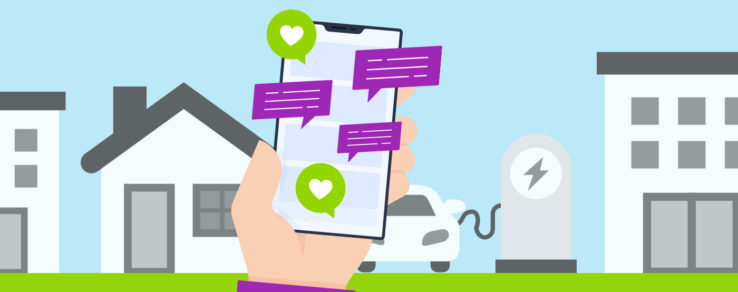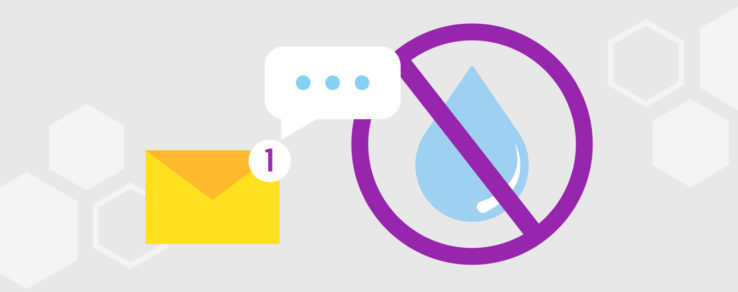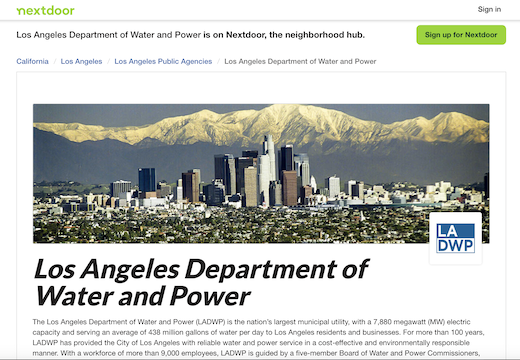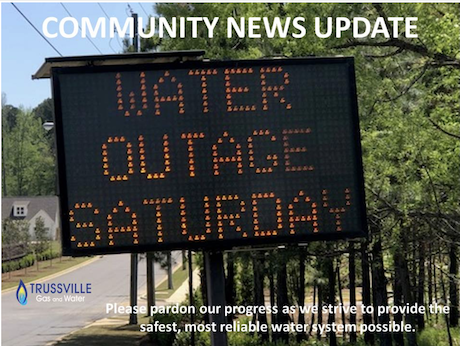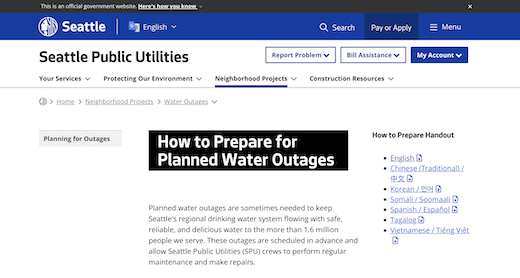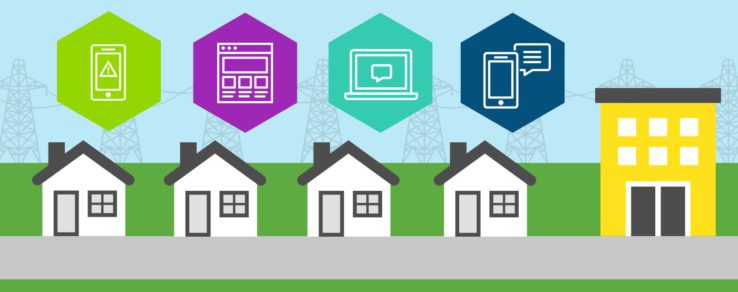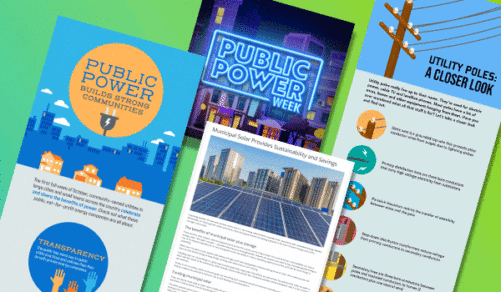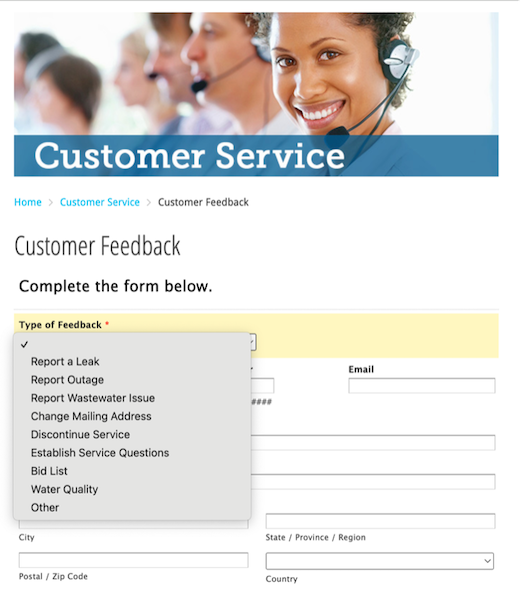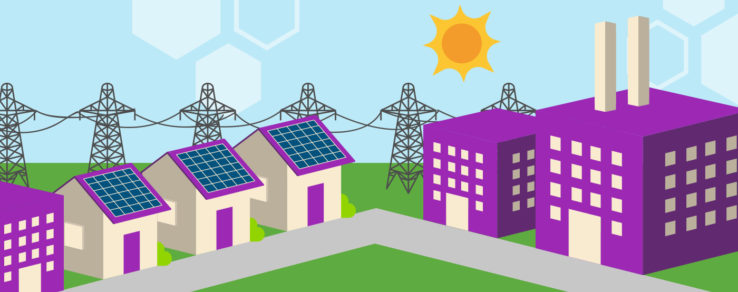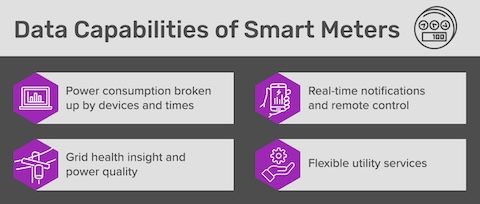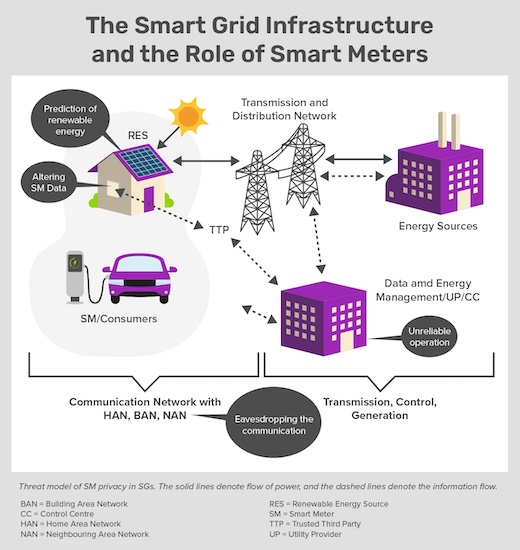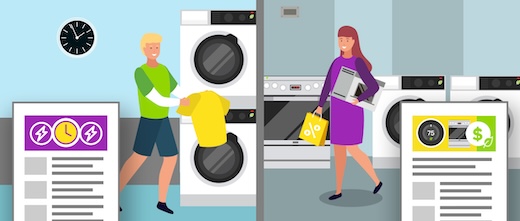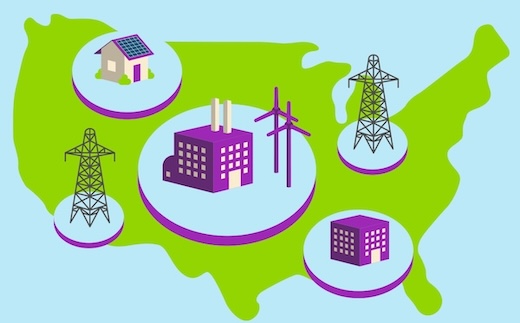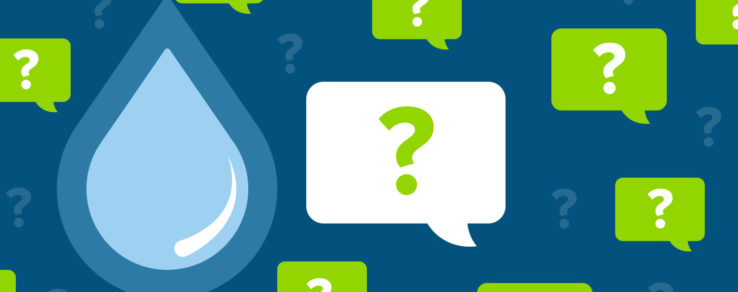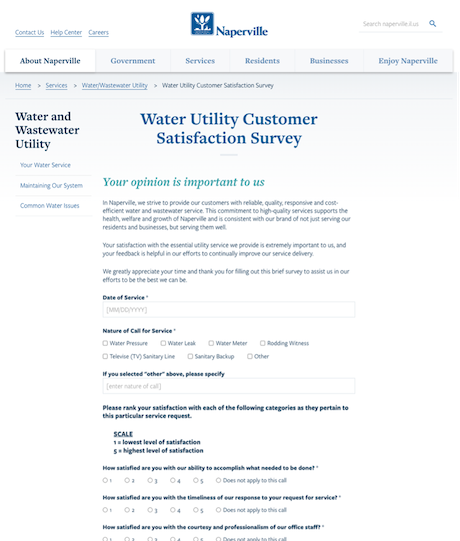Municipal utilities deliver necessary services like electricity, water, sanitation and gas to customers across their service territories. For these utilities, building a strong bond with customers is not only important but necessary. Highly engaged customers tend to be more satisfied with services, more likely to participate in programs and exhibit greater brand loyalty. Fostering this engagement, however, requires reaching customers where they are very active – in the digital sphere.
Social media emerges as a powerful tool for fostering municipal community engagement, building trust and creating meaningful connections. It uniquely positions utilities to interact with customers where they spend considerable time. The average person spends 2 hours and 24 minutes on social media daily. Social media also leaves additional room to reach and connect with younger generations, such as millennials and Gen Z. In fact, over one-third of Gen Zers spend over four hours a day on various platforms.
Municipal utilities can reap substantial rewards by embracing social media as an engagement catalyst rather than just a broadcast tool. This shift in perspective allows for a more interactive and mutually beneficial relationship with the communities they serve.
Redefining the Customer Relationship: More than Just Ratepayers
Customers are more than just ratepayers – they’re individuals with diverse wants, interests, needs and preferences. Brian Lindamood, VP of Marketing and Content Strategy at Questline Digital, emphasizes the importance of leaving the bad habits of the ratepayer days behind and not taking customers for granted.
“Customers today have robust digital relationships with every company they do business with,” said Lindamood. “They expect companies to anticipate their needs and receive content relevant to their interests.”
Municipal utility companies must strive to add value to the customer relationship by fostering genuine connections and creating opportunities for two-way communication.
By engaging customers through social media, municipal utilities make themselves available as trusted partners. Customers then have the opportunity to become more engaged with their utility, increasing customer satisfaction (CSAT) scores in the long run. Loyal, engaged customers frequently like, share and comment on social media posts. Additionally, these customers contribute suggestions, questions, requests and ideas, showcasing their involvement and desire for interaction.
Best Practices for an Engaging Social Media Presence
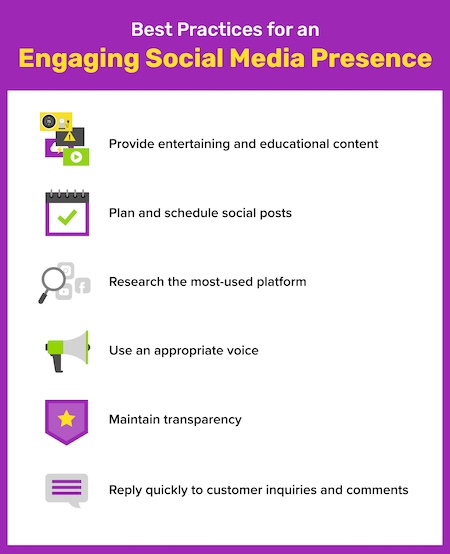
To cultivate an engaging social media presence, municipal utility companies must focus on these seven best practices:
- Provide entertaining and educational content: Customers won’t feel compelled to connect if they don’t find content worthy of liking, commenting or sharing. Include a mix of fun, visually appealing posts like animated GIFs or infographics, along with informative how-to articles and short videos explaining energy topics. Videos, for example, get 200% more comments, likes and shares than posts with no media or links, according to Questline Digital performancemetrics. Content doesn’t always have to be utility-related. Sharing posts about holidays and events can also be engaging to customers and shows that there are real people behind the digital platforms.
- Plan and schedule social posts: Rather than posting sporadically, municipal utilities should develop a consistent cadence and quarterly content calendar to maintain an active social presence. Planning posts in advance ensures a steady stream of engaging content. Use scheduling tools to make it easier to coordinate and automatically publish posts at optimal times. For example, Facebook offers a free scheduling tool in its Meta Business Suite.
- Design content for smaller screens: Nearly 80% of social media users access platforms exclusively from mobile devices. Although most websites are mobile responsive, municipal utilities should still ensure all content is optimized for mobile. Focus on short, concise copy. Limit posts to one link that goes to a landing page optimized for mobile. And consider using eye-catching but simple visuals that don’t clutter a small screen.
- Research the most-used platform: Don’t spread resources too thin by trying to master every social platform. Analyze customer demographics and focus on one to three platforms where they are most active. For the majority of utilities, because it reaches the most municipal customers and the broadest audience overall.
- Use an appropriate voice: Municipal utilities must maintain a consistent, casual and conversational tone that reflects their role as a trusted community resource. This tone should not include technical jargon and should speak in a relatable way.
- Maintain transparency: Social media provides the perfect space for municipal utilities to uphold transparency and open communication with customers and the community. Strive for honesty in posts and replies, especially regarding outages and rate increases.
- Reply quickly to customer inquiries and comments: Prompt response times lead to positive customer experiences and brand loyalty. Many times, customers visit social media pages for answers to questions or updates on service information before even navigating to a utility’s website. Be warned that not all comments will be positive. It’s important to recognize this and strategically respond to comments, both positive and negative, when it makes sense.
Implementing the right strategies for resonating content, optimized delivery and meaningful interaction will determine the success of a municipal utility’s social media efforts. While best practices supply a framework, the most engaging social media accounts filter proven tactics through the utility’s unique brand voice and deep understanding of its customer base.
Examples of Municipal Community Engagement Social Media Posts
Developing compelling social media content that builds municipal community engagement requires a strategic approach and creative thinking.
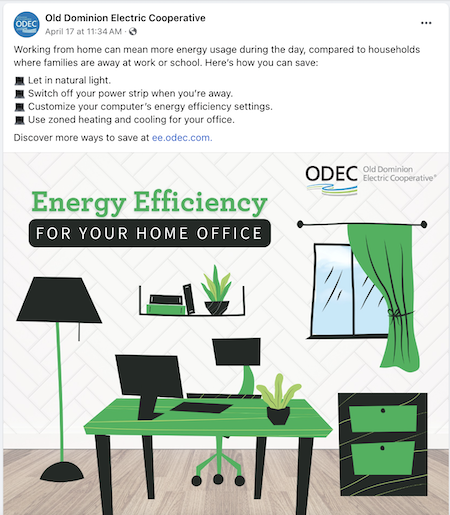
Old Dominion Electric Cooperative (ODEC) used this post to educate customers on practical energy-saving tips for working at home. It includes an eye-catching visual and a relevant topic, as roughly 14% of U.S. workers now work remotely. The post’s short, succinct advice ends with a clear call to action that leads customers to a mobile-friendly website with additional information.
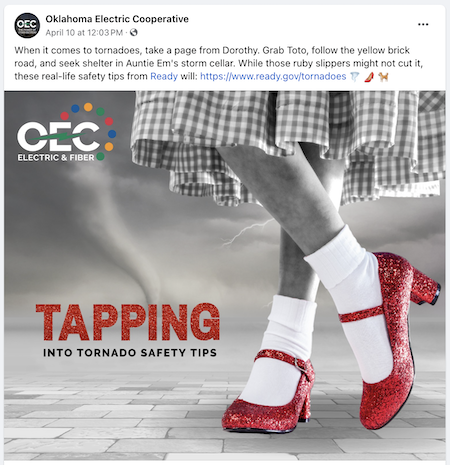
Oklahoma Electric Cooperative leverages pop culture and nostalgia to communicate a serious message about tornado safety. The shoes’ red color stands out in the black-and-white image and captures customer’s attention, making them more likely to read the post and learn safety tips. The casual, friendly phrasing also aligns with the community-oriented, approachable voice.
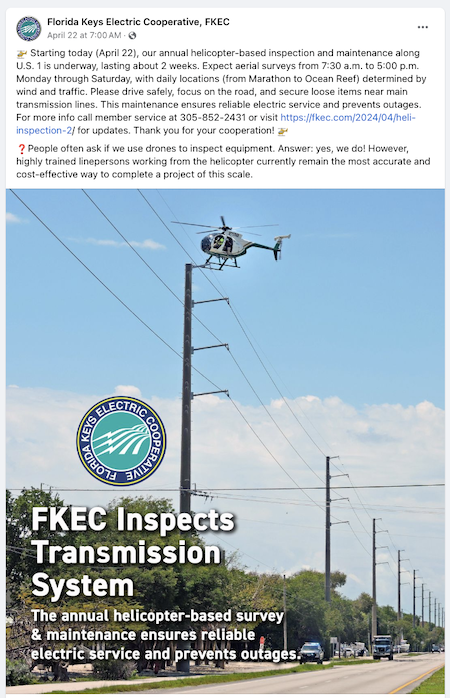
Florida Keys Electric Cooperative took to social media to inform its customers about upcoming inspections and maintenance. This post features transparency and open communication. It anticipates that customers will wonder why helicopters are operating in the area and features a photo of what the helicopters look like. The post also takes time to address a frequently asked question about drones.
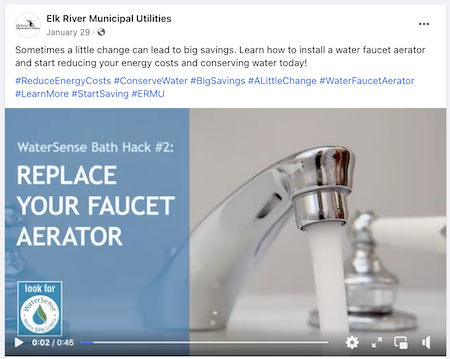
This Facebook post from Elk River Municipal Utilities features a short, how-to video explaining an easy way to conserve water and reduce energy costs. Customers can quickly view how to replace their faucet aerators. This information provides value to customers by empowering them to take a cost-saving action.
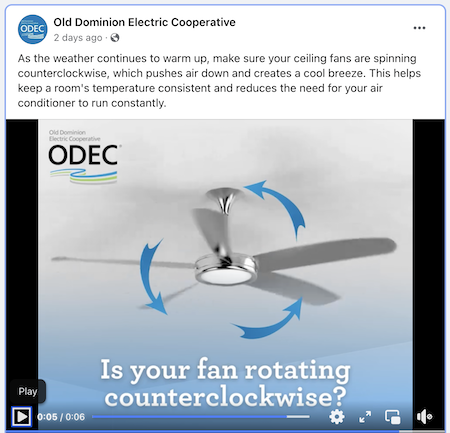
ODEC also featured a short video reminding customers to change the rotation of their fans as the weather warms up. The image copy includes a direct question prompting customers to check out their ceiling fans. The topic is timely for the season and helps customers make the most of their electric-powered appliances and improve their comfort.
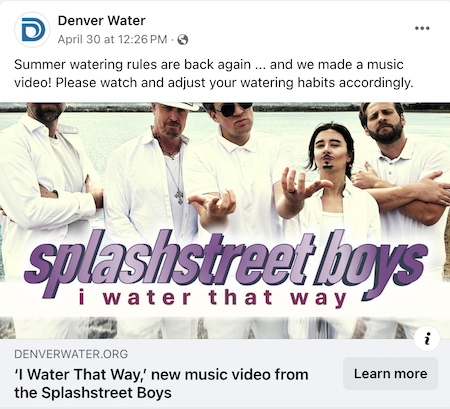
Denver Water created a music video parody titled “I Water That Way” that promotes wise summer watering habits and shared it on Facebook. The entertaining video riffing on a boy band hit went viral and was even featured on the Today Show, effectively delivering an important conservation message through humor and pop culture savvy. The post earned praise from thousands of “likers” and hundreds of “commenters.”
The Power of Authenticity: Beyond Best Practices
While the best practices outlined here offer a strong foundation, remember that social media thrives on authenticity. Municipal utilities know their customers best. Municipal community engagement flourishes when utilities speak with a genuine brand voice that resonates with their audience.
